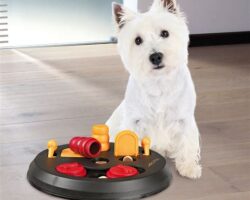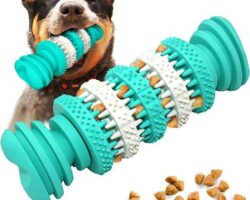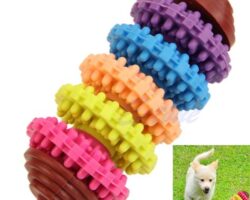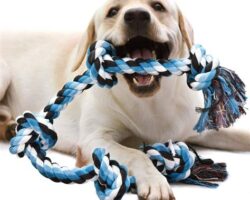Welcome to our blog post on understanding the world of pet accessories! As pet owners, we know how important it is to provide our furry friends with the right gear for their comfort and safety. In this post, we will explore the basics of pet accessories, including different types of harnesses, choosing the right collar, and various leash options. We will also discuss considerations for small breed pets, as well as the best accessories for large breed pets. Additionally, we will provide tips on finding the perfect fit for your pet and training them to use their accessories. So, let’s dive in and discover all there is to know about pet accessories!
Understanding the Basics of Pet Accessories
When it comes to taking care of our beloved pets, providing them with the right accessories is essential. Pet accessories play a crucial role in ensuring their comfort, safety, and overall well-being. From collars and harnesses to leashes and toys, understanding the basics of pet accessories is necessary for every pet owner. In this blog post, we will delve into the different types of pet accessories, their importance, and how to choose the best ones for your furry friend.
Types of Pet Accessories:
1. Collars: Collars are one of the most fundamental pet accessories. They serve multiple purposes, including identification and control. Collars can be made of various materials such as nylon, leather, or even fabric. It is important to choose a collar that fits your pet comfortably and doesn’t cause any discomfort.
2. Harnesses: Harnesses are an excellent alternative to collars, especially for pets that tend to pull or have respiratory issues. They provide better control by distributing the force evenly across the pet’s body. There are different types of harnesses available, such as back-clip, front-clip, and step-in. Each type has its own advantages, so consider your pet’s needs and behavior when choosing a harness.
3. Leashes: Leashes are indispensable when it comes to walking or exercising your pet outdoors. They come in various lengths, materials, and designs. Retractable leashes are popular as they offer flexibility, allowing your pet to explore while still being under control. It is important to choose a sturdy leash that is comfortable to hold and doesn’t strain your pet’s neck or back.
Importance of Pet Accessories:
Pet accessories are not just fashion statements; they serve important functions that enhance the quality of life for our furry friends. Properly fitted collars and harnesses ensure that pets can be identified if they get lost, preventing them from being separated from their owners. Leashes help in controlling their movements, keeping them safe from potential dangers like roads or aggressive animals. Accessories like toys and feeding bowls provide mental stimulation and promote a healthy lifestyle.
| Benefits of Pet Accessories |
|---|
| Enhance safety and control |
| Facilitate identification |
| Promote a healthy lifestyle |
| Provide mental stimulation |
Choosing the Best Pet Accessories:
Selecting the right pet accessories can be overwhelming, considering the wide range of options available. Here are some factors to consider when making your choice:
- Size: Ensure that the accessory fits your pet perfectly without causing any discomfort or restriction.
- Material: Opt for high-quality, durable materials that are safe for your pet and easy to clean.
- Functionality: Consider the specific needs and behavior of your pet. For example, if your pet pulls during walks, a no-pull harness might be the ideal choice.
- Safety: Check for any potential hazards such as loose parts or choking risks. Avoid accessories that may pose a threat to your pet’s well-being.
By keeping these factors in mind and understanding the basics of pet accessories, you can make informed choices that will ensure the comfort, safety, and happiness of your furry companion. Remember, just like humans, our pets deserve the best!
Different Types of Harnesses for Your Pet
A harness is an essential accessory for pet owners, especially for those who have active and energetic pets. It provides a secure and comfortable way to control your pet while ensuring their safety. There are different types of harnesses available in the market, each designed for specific purposes and breeds of pets. In this blog post, we will explore the different types of harnesses that you can choose for your pet.
1. Standard Harness: This is the most common type of harness used for pets. It consists of straps that wrap around your pet’s chest and back, with a ring to attach the leash. Standard harnesses are suitable for most pets and provide good control and support.
2. Step-In Harness: As the name suggests, step-in harnesses are designed for convenience. They have openings on both sides, allowing your pet to step into the harness instead of putting it over their head. Step-in harnesses are ideal for pets who are wary or uncomfortable with harnesses going over their heads.
3. Vest Harness: Vest harnesses are similar to standard harnesses but with a vest-like design. They provide more coverage and support, making them suitable for pets with neck or back issues. Vest harnesses distribute the pressure evenly across the chest and back, reducing the strain on your pet’s neck.
4. No-Pull Harness: No-pull harnesses are specifically designed to discourage pulling behavior in pets. These harnesses have a front attachment point for the leash, which redirects the pulling force towards the side, effectively discouraging your pet from pulling. No-pull harnesses are great for training purposes and can help improve leash manners.
5. Car Harness: Car harnesses are designed to secure your pet safely during car rides. They have attachment points that can be connected to the car’s seatbelt system, ensuring that your pet stays in place and doesn’t distract the driver. Car harnesses are crucial for your pet’s safety during travel.
6. Escape-Proof Harness: Some pets are great escape artists and can easily slip out of regular harnesses. Escape-proof harnesses are designed with additional security features like double straps, buckles, or closures to prevent your pet from escaping. These harnesses provide peace of mind for pet owners with Houdini-like pets.
In conclusion, choosing the right harness for your pet is essential to ensure their comfort, control, and safety. Consider your pet’s size, breed, behavior, and specific needs when selecting a harness. Whether it’s a standard harness, step-in harness, vest harness, no-pull harness, car harness, or escape-proof harness, there is a suitable option for every pet. Invest in a good harness and enjoy hassle-free walks with your furry companion!
Choosing the Right Collar for Your Pet
When it comes to choosing a collar for your pet, it’s important to consider their comfort, safety, and specific needs. With so many options available on the market, it can be overwhelming to make the right choice. However, by understanding the different types of collars and their purposes, you can ensure that your furry friend is both stylish and secure.
Listed below are some of the most popular types of collars:
- Buckle Collars: These traditional collars feature a buckle closure and are adjustable for a secure fit. They are suitable for most pets and are available in a wide range of designs and materials.
- Martingale Collars: Also known as limited-slip collars, martingale collars are designed to prevent your pet from slipping out of their collar. They have a loop that tightens when the leash is pulled, ensuring your pet’s safety during walks.
- Harnesses: While not technically a collar, harnesses are an alternative option for pets who tend to pull on their leash. They distribute the pulling force evenly across their chest and shoulders, reducing strain on the neck.
Additionally, it’s essential to consider the size and breed of your pet when choosing a collar. Small breed pets may benefit from a lightweight and narrow collar, ensuring optimal comfort and preventing any discomfort or breathing difficulties. On the other hand, large breed pets may require a wider and more robust collar to support their strength and size.
| Collar Type | Key Features | Recommended for |
|---|---|---|
| Buckle Collars | Adjustable, secure buckle closure | Most pets |
| Martingale Collars | Prevents slipping out of the collar | Pets who tend to escape |
| Harnesses | Evenly distributes pulling force | Pets prone to pulling |
Remember, your pet’s collar should fit snugly but not too tight. You should be able to fit two fingers between the collar and your pet’s neck. Regularly check the collar for any signs of wear and tear, and replace it if necessary. By selecting the right collar for your pet, you can ensure their comfort and safety while adding a touch of style to their everyday adventures.
Exploring Various Leash Options
When it comes to walking your pet, having the right leash can make all the difference. There are so many leash options available that it can be overwhelming to choose the one that is best suited for your pet. In this article, we will be exploring various leash options and discussing their pros and cons.
1. Standard Leash: The most common type of leash is the standard leash. It is typically made of nylon or leather and comes in various lengths. The standard leash is versatile and can be used for dogs of all sizes. However, it may not provide as much control as other types of leashes.
2. Retractable Leash: Retractable leashes have gained popularity in recent years. These leashes have a mechanism that allows you to adjust the length of the leash as needed. They provide your pet with more freedom to explore while still maintaining control. However, it is important to use a retractable leash responsibly and be mindful of your surroundings.
3. Hands-Free Leash: If you lead an active lifestyle and like to have your hands free while walking your pet, a hands-free leash might be the perfect option for you. These leashes are designed to be worn around your waist or across your body, allowing you to have both hands available. They are ideal for jogging or running with your pet.
| Leash Type | Pros | Cons |
|---|---|---|
| Standard Leash | Versatile, suitable for all sizes | May not provide as much control |
| Retractable Leash | Adjustable length, provides freedom | Requires responsible usage |
| Hands-Free Leash | Allows hands-free movement | May limit control in certain situations |
These are just a few of the leash options available in the market. It is important to consider your pet’s size, behavior, and your walking preferences when choosing a leash. Always ensure that the leash is strong and durable enough to withstand the force of your pet pulling. Remember to prioritize the comfort and safety of both you and your pet when exploring leash options.
Considerations for Small Breed Pets
Small breed pets have their own unique set of needs and considerations when it comes to choosing the right accessories. From harnesses to collars and leashes, it’s important to consider the size, temperament, and specific characteristics of your small furry friend. Here are some key factors to keep in mind when selecting accessories for your small breed pet.
Size Does Matter: When it comes to small breed pets, size truly does matter. It’s important to choose accessories that are proportionate to your pet’s size and weight. A harness or collar that is too big can easily slip off, posing a safety risk, while one that is too tight can cause discomfort or even injury. Always measure your pet and consult size guides before making a purchase.
Temperament and Behavior: Small breed pets often have different temperaments and behaviors compared to larger breeds. They may be more sensitive or excitable, requiring accessories that provide extra comfort and control. Look for harnesses or collars with additional padding or adjustable features to ensure a snug and secure fit without causing any discomfort.
Consider Special Needs: Some small breed pets may have special needs or health conditions that require specific accessories. For example, if your pet has a collapsing trachea or a neck injury, using a harness instead of a collar can help distribute pressure more evenly and prevent further damage. Always consider any physical limitations or medical conditions your pet may have when selecting accessories.
Material and Durability: As small breed pets tend to be more delicate, it’s important to choose accessories made from high-quality materials that are both durable and comfortable. Look for products made from soft, lightweight, and breathable materials that won’t irritate your pet’s skin or restrict their movements. Additionally, consider accessories with reflective or high-visibility features to ensure your pet’s safety during walks or outdoor activities.
Tailored Fit: Just like humans, pets come in different shapes and sizes. Standard “one-size-fits-all” accessories may not provide the best fit for small breed pets. Look for brands that offer a wide range of sizes and adjustable straps to ensure a customized and secure fit. Taking the time to properly measure your pet and select the right size can make a significant difference in their comfort and safety.
Considerations for Small Breed Pets:
- Choose accessories proportionate to your pet’s size and weight.
- Consider your pet’s temperament and behaviors when selecting accessories.
- Take into account any special needs or health conditions your pet may have.
- Opt for accessories made from durable and comfortable materials.
- Ensure a tailored fit by measuring your pet and selecting the right size.
| Pros | Cons |
|---|---|
| Properly sized accessories provide a secure and comfortable fit. | One-size-fits-all options may not be suitable for small breed pets. |
| Choosing the right accessories can help manage and control your pet’s behavior. | Low-quality materials may cause discomfort or irritations. |
| Specialized accessories can cater to unique needs and health conditions. | High-quality accessories may come with a higher price tag. |
By considering these factors and taking the time to choose the right accessories, you can ensure the safety, comfort, and enjoyment of your small breed pet. Remember to regularly check and inspect your pet’s accessories for any signs of wear or damage, and replace them as necessary. With the right accessories, your small furry friend will be ready for any adventure that comes their way!
Best Accessories for Large Breed Pets
When it comes to large breed pets, finding the right accessories can be a challenge. These dogs require specialized accessories that are sturdy, comfortable, and designed to fit their unique needs. Whether you have a giant breed like a Great Dane or a large breed like a Labrador Retriever, here are some of the best accessories to consider:
1. Collapsible Travel Bowls: Large breed dogs require larger quantities of food and water, especially during long walks or travel. Collapsible travel bowls are lightweight, easy to carry, and can be packed away when not in use. They are perfect for on-the-go adventures with your furry friend.
2. Adjustable Seat Belt Harness: Safety should always be a priority, especially when traveling in a car with your large breed pet. An adjustable seat belt harness secures your pet to the seat, preventing them from moving around or becoming a distraction. Look for harnesses that are specifically designed for larger dogs and have adjustable straps for a snug fit.
3. Elevated Feeding Stations: Large breed dogs are prone to bloating and digestive issues, so an elevated feeding station can be beneficial for their overall health. These feeding stations raise the food and water bowls to a comfortable height, reducing the strain on your pet’s neck and improving digestion. Look for sturdy, non-slip options that can handle the weight of your furry friend.
| Pros | Cons |
|---|---|
| Prevents neck strain and bloating | Takes up more space |
| Improves digestion | Can be more expensive |
| Reduces the risk of regurgitation | Not suitable for all breeds |
4. Orthopedic Beds: Large breed dogs are more prone to joint and hip issues, so investing in an orthopedic bed can provide them with the comfort and support they need. These beds have dense foam padding that relieves pressure on their joints and reduces the risk of developing arthritis. Look for beds with high-quality memory foam and removable, machine-washable covers for easy maintenance.
5. Heavy Duty Leashes: Large breed dogs have the strength to pull and can easily break flimsy leashes. Opt for heavy-duty leashes made from durable materials like nylon or leather. Look for leashes with padded handles for added comfort, reflective strips for visibility during nighttime walks, and a sturdy metal clasp for secure attachment.
Choosing the best accessories for your large breed pet can enhance their comfort, safety, and overall well-being. By considering their specific needs and investing in high-quality products, you can provide them with the care they deserve.
Finding the Perfect Fit for Your Pet
When it comes to choosing pet accessories, finding the perfect fit is crucial. Whether it’s a collar, harness, or leash, the right fit ensures comfort and safety for your furry friend. So, how do you go about finding the perfect fit for your pet?
First and foremost, it’s important to measure your pet accurately. Each accessory comes in different sizes, so you want to make sure you select the right one for your pet’s specific measurements. Use a measuring tape to determine the circumference of their neck for a collar, or their chest and girth for a harness. This will give you the starting point for finding the perfect fit.
Next, consider the material of the accessory. To ensure comfort, look for accessories made from soft and durable materials. For collars, consider options with adjustable straps that allow for a customized fit. If you’re opting for a harness, make sure it has enough padding to prevent discomfort or chafing. Taking these material factors into account will contribute to your pet’s overall comfort.
Lastly, always try the accessory on your pet before finalizing your choice. This step is crucial to determine if the fit is appropriate and comfortable. Watch for any signs of discomfort or restriction of movement. Your pet should be able to move freely while wearing the accessory.
In conclusion, finding the perfect fit for your pet is essential to their overall well-being and comfort. By accurately measuring your pet, considering the material of the accessory, and trying it on before purchasing, you can ensure a comfortable and safe fit. Remember, your pet’s comfort should always be a top priority when selecting any type of pet accessory.
Training Tips for Using Pet Accessories
When it comes to pet accessories, it’s not just about picking out the cutest collar or trendiest leash. These items serve a practical purpose in training and keeping your furry friend safe. Whether you’re a new pet owner or have had pets for years, it’s important to understand how to properly use accessories and incorporate them into your training routine. Here are some training tips to help you make the most of pet accessories.
1. Start Slowly: Introduce your pet to any new accessory gradually. Let them sniff and inspect it before putting it on them. If they seem uncomfortable or resistant, give them time to adjust and try again later.
2. Use Positive Reinforcement: When your pet shows positive behavior while wearing an accessory, reward them with treats, praise, or playtime. This will create a positive association and make them more likely to cooperate during training sessions.
3. Be Consistent: Consistency is key when using pet accessories for training. Use them in the same way and at the same times every day to establish a routine. This will help your pet understand the purpose of the accessory and what is expected of them.
4. Gradually Increase Duration: If you’re using an accessory like a harness or collar for training, start with short periods and gradually increase the duration. This will ensure your pet is comfortable and prevent them from becoming overwhelmed.
5. Seek Professional Help if Needed: If you’re struggling with training or using accessories properly, don’t hesitate to seek professional help. A professional trainer can provide guidance and personalized tips for your specific pet.
6. Regularly Check for Proper Fit: As your pet grows or changes, their accessories may need to be adjusted or replaced. Regularly check for proper fit to ensure their comfort and safety.
7. Choose the Right Accessories: Different pets have different needs, so make sure to choose the right accessories for your pet’s breed, size, and behavior. Consult with a pet store or veterinarian for recommendations.
Using pet accessories effectively in training can make a world of difference in your pet’s behavior and overall well-being. Remember to be patient, consistent, and always prioritize your pet’s comfort and safety. With the right tools and training tips, you and your pet can enjoy the benefits of using pet accessories together.
Frequently Asked Questions
What are the different types of harnesses for pets?
There are several types of harnesses for pets, including step-in harnesses, vest harnesses, and front-clip harnesses. Step-in harnesses are easy to put on and secure around the pet’s chest. Vest harnesses cover more of the pet’s body and provide better support. Front-clip harnesses have a ring on the front of the chest, which helps redirect the pet’s attention during walks.
How do I choose the right collar for my pet?
When choosing a collar for your pet, it’s important to consider the size and temperament of your pet. For small breed dogs, a narrow collar made of a lightweight material will be more comfortable. For larger dogs, a wider collar made of stronger material may be necessary. Additionally, consider any specific needs your pet may have, such as a martingale collar for dogs that tend to slip out of regular collars.
What are the different leash options available?
There are several leash options available for pet owners, including standard leash, retractable leash, and hands-free leash. A standard leash is a fixed length leash that offers more control. A retractable leash allows for more freedom and flexibility as the length can be adjusted. A hands-free leash is designed to be worn around the waist or over-the-shoulder, allowing the pet owner to have both hands free.
What considerations should I keep in mind for small breed pets?
When it comes to small breed pets, it’s important to consider the size and weight of the accessories. For example, choose a harness and collar that are lightweight and properly fitting for your pet’s small frame. Additionally, consider the length of the leash to ensure your pet has enough freedom to explore without getting tangled or overwhelmed.
What are the best accessories for large breed pets?
For large breed pets, it’s important to choose accessories that are durable and sturdy. Look for a harness and collar made of strong materials, such as nylon or leather, to ensure they can withstand the strength of a large dog. Additionally, consider getting a longer leash to give your pet more freedom to roam during walks.
How can I find the perfect fit for my pet?
To find the perfect fit for your pet, it’s essential to measure them accurately. For harnesses, measure the circumference of their chest and neck. For collars, measure the circumference of their neck. Use these measurements to determine the appropriate size according to the manufacturer’s guidelines. If in doubt, consult a professional or try different sizes to ensure the best fit.
What training tips can you provide for using pet accessories?
When introducing your pet to new accessories, it’s important to do so gradually and positively. Start by allowing your pet to sniff and investigate the new items before gradually putting them on. Use treats and praise to reward your pet for calm and cooperative behavior. Begin training with short sessions, gradually increasing the duration. Be patient and consistent, and always reward good behavior to make the experience positive for your pet.





